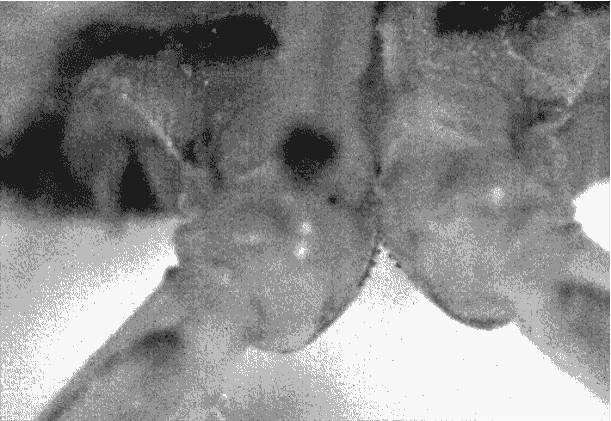The Issus, insects also known as planthoppers, use structures in their legs that are like mechanical gears to propel them, scientists discovered.
The finding came after Malcolm Burrows, a zoologist at the University of Cambridge in the United Kingdom, and his colleague Gregory Sutton were studying how insects jump so quickly.
They started studying the Issus coleoptratus, or planthopper, and found that these insects have protruding structures on their hind-leg joints that are like teeth.
The teeth, upon closer examination, were found to lock together neatly to propel the creatures’ leaps and bounds.
“We were totally dumbfounded when we saw this,” Burrows told Inside Science.
“You could see these gear wheels moving past each other, just like a man-made gear wheel. It was extraordinary.”
The gears enable the creatures to jump at speeds as high as 8.7 miles per hour, with each back leg moving within 30 microseconds (30 millionths of a second) of the other.
This is the “first observation of mechanical gearing in a biological structure” the researchers said in a statement.
“We usually think of gears as something that we see in human designed machinery, but we’ve found that that is only because we didn’t look hard enough,” said Sutton, now at the University of Bristol. “These gears are not designed; they are evolved - representing high speed and precision machinery evolved for synchronisation in the animal world.”
Curiously enough, adult planthoppers don’t have the same gears. They’re gone when the young insects, or nymphs, transition to adulthood and cast off rigid skin.
It’s unclear why this is but the scientists say it could be because the gear system is wholly damaged when one tooth on the gear breaks. Nymphs can repair the damage through molting, but adults couldn’t repair it because molting stops.
“If you damage your cogwheel on your first day as an adult, then you’re a very unlucky planthopper,” Burrows said.
The adults also have something similar to thigh bones that appears to enable them to jump at the similar speeds and heights without needing the gears.
The researchers published their study in the journal Science.

GIF via Smithsonian Magazine.





